On the initial post of this series traveling back in time to my first garden in 2011, I explained my criteria, design, and installation of the backyard garden. In this post, I will be going through the plants on the raised bed portion of the garden, perimiter of the garden, and as a nice surprise the volunteer honeydew.
ALL PHOTOGRAPHS COPY-WRITE @phedizzle
LESSON 1: WHEN PLANTS GO NUTS
Knowing each plant's requirements is important. Guessing isn't something that will produce the best results. Sometimes the results are disappointing, sometimes better than expected. This was a situation where the plants grew out of control. I didn't mind, but because I was not prepared for this scenario, the locations these flowers were stationed weren't the best areas.
These flowers werehand-wateredd once a week for a short period of time. The cinderblocks they were planted in absorbed water but the ground was sandy so the drainage was fast. These flowers were obviously drought and heat tolerant because they thrived. I considered transplanting them to another location but never did. Eventually, they just retired to the compost bins.
GOOD GRIEF THESE FLOWERS GOT HUGE! They were so beautiful. I'd planted 6 on the corners of the perimeter. One died. The rest clearly went bazerk.
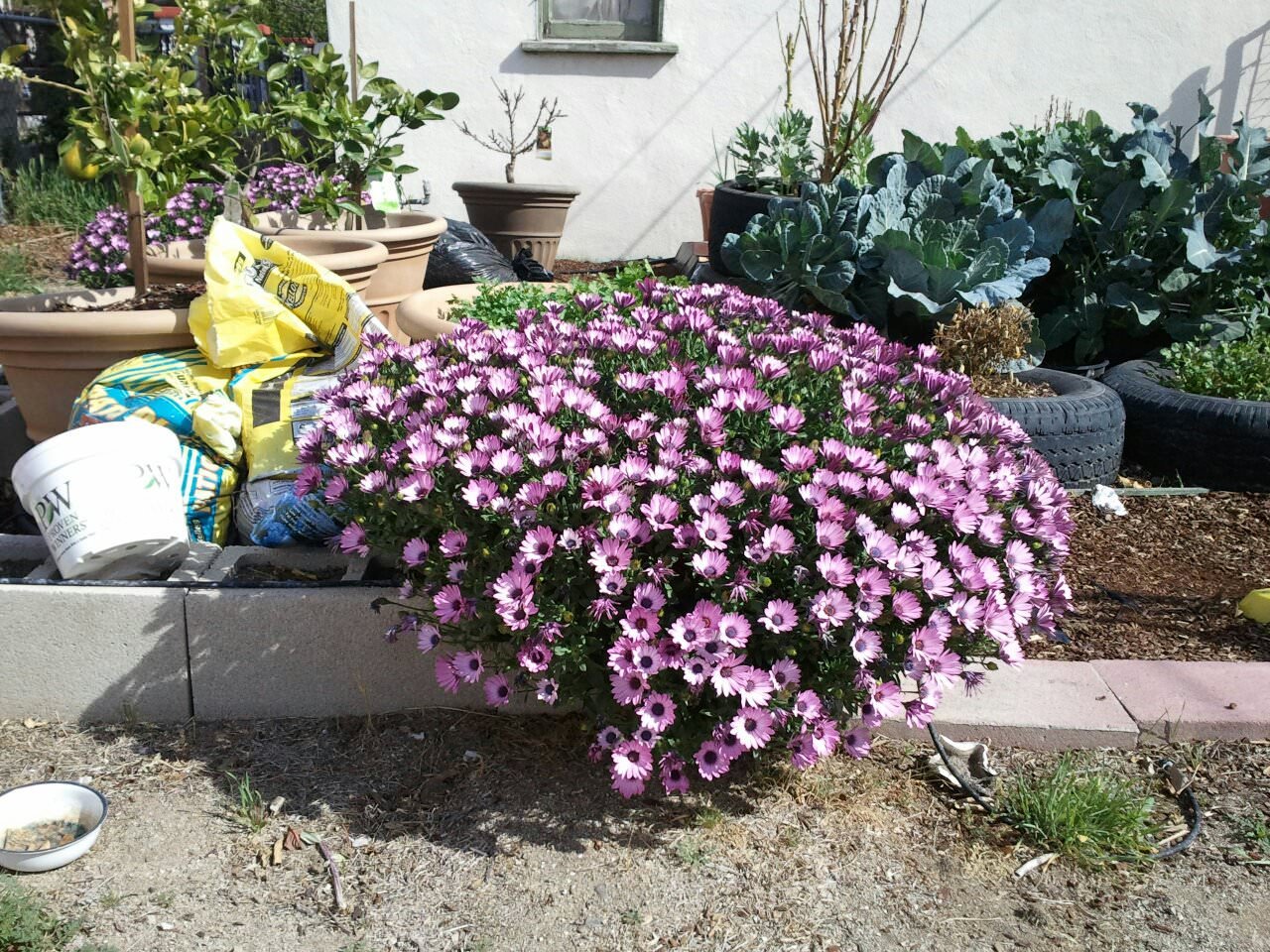
I forget the name of this beautiful flower, although I believe it's a member of the Daisy family. This came in a 6" pot. It was planted in one of the two squares of the cinderblock perimeter. That sucker got over 3 foot in diameter. I had to prune it multiple times, which just stimulated it's growth

LESSON 2: CHOP AND DROP STEVIA
- When I created this garden I used soil from Home Depot. It is not what most gardeners and permaculturists would consider good soil. Because I had not learned very much about how plants grow, as in the type soil, soil health, growing conditions, etc., everything planted was on a whim and a guess. Nevertheless, that was my approach. As you can imagine, there were both successes and failures. One of the big successes would be the stevia. There was a method I learned here by accident which is something I later learned was a common technique in permaculture, and occuring naturally in the wild. One thing I'm glad I did was buy organic and heirloom seeds from BAKER CREEK HEIRLOOM SEEDS.
- One of those packs of seeds was an herb I was growing because, at the time, I was trying to change my diet to eliminate sugars/carbs. STEVIA is a sweet herb with negligable calories. It has become a fairly common sweetner substitute nowadays, but if you are unfamiliar, here are some facts about the plant accordin to the MEDICAL NEW TODAY.
As stevia is 200 to 300 times sweeter than table sugar. It typically requires about 20 percent of the land and far less water to provide the same amount of sweetness as other mainstream sweeteners.
The sweet-tasting components in stevia sweeteners occur naturally. This characteristic may benefit people who prefer naturally-sourced foods and beverages. The low calorie count qualifies Stevia to be a healthful alternative for diabetes control or weight loss.
- Funny enough, it never occured to me to research any plants. Just threw some seeds in some pots and tires, then waited to be surprised with no idea what the plants would even look like. It was on the raised planting area in a 12" pot with the same crappy soil and watering schedule as everything else on that water line. It was against the wall of the house on the Southeast corner, which was shaded the first half of the day, only getting direct sun in the afternoon. As a reminder, the climate was hot and moderately arid. When the plant grew into a short bushy plant, it was prettier than I expected, to be honest. Due to the hot nature of the area, it quickly bolted (went to flower and seed due to the heat). Disappointed by this, I cut the dried dead stems with the flowers still attached and lazily left them in the pot.
- To my delight the plant grew back in the fall and did not bolt again. The important lesson learned was that if a plant has gone to flower, dies & dries, that is when the seeds are produced and "cured". In nature, these types of annual plants drop their seeds on the ground then patiently wait until the growing conditions are right to be born again. In permaculture, this is called SELF SEEDING. CHOP AND DROP is when people help this process along for additional harvests or to suppress weeds. If you hear someone saying SELF SEEDING ANNUALS they mean plants that grow one season and if allowed to grow to full maturity where they produce flowers and seeds, the seeds fall, as described above, to prograte the next growing season.
Regrowth After CHOP & DROP
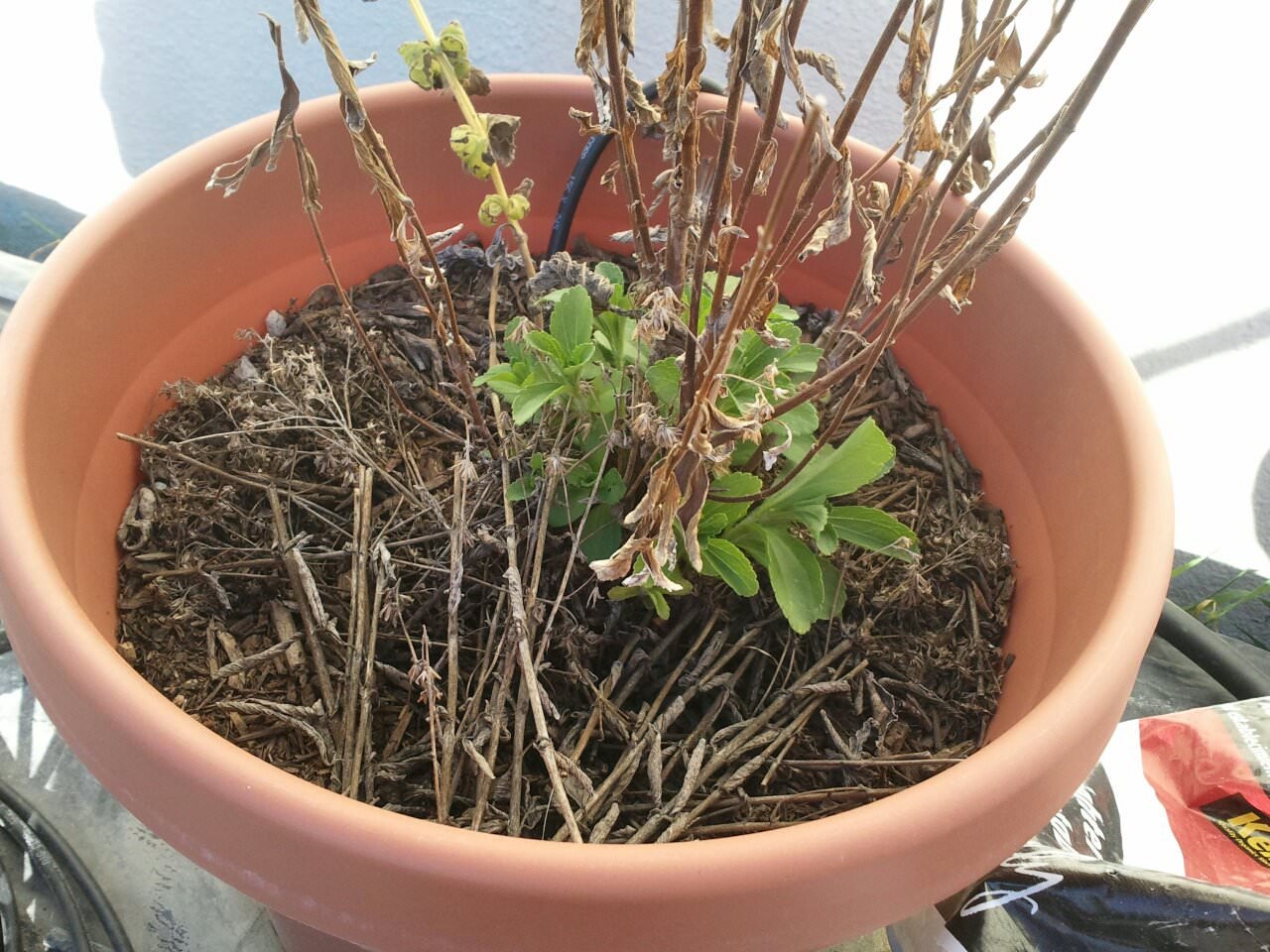
Beautiful And Happy. You can see the chopped branches in both pictures

LESSON 3: ESPELLIAR, PRUNING, & GROWING CONDITIONS
- Growing up with Blackberry canes and having picked Blueberries from farms in the Midwest, I knew their growth characteristics. At some point, after planting this garden I learned about Espelliar, of which the chainlink fence was perfect for practicing. Pruning was easily done on the Blueberry plant with great results.
- As you can see, the Bell Pepper plants between the Blueberry/Blackberrry and Blackberry/Purple Bush Beans did not look very happy. They eventually died producing no peppers. Later I learned more about the plants realizing I probably was not watering them enough, they needed more shade, and the soil was crappy.
- The Purple Bush Beans in the tire grew okay, but not nearly as great as I'd hoped. I picked about two handfuls of the beans. The plants would have produced more but half the flowers dropped. I believe this was due to poor soil from lack of micronutrients.
Overview of the South Facing Raised bed L to R: Blueberry, Bell Peppers, Blackberry, Bell Peppers, Purple Bush Beans
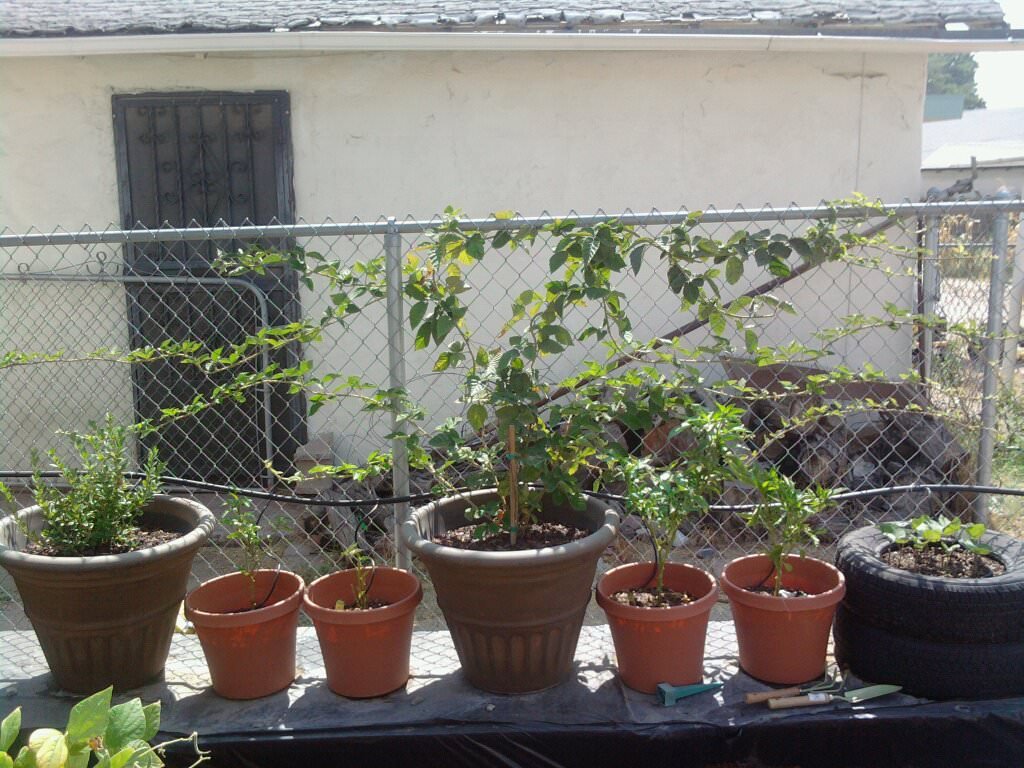
The Blackberry early summer when the Bell Peppers on the right looked promising and the bell peppers on the left were starting to struggle
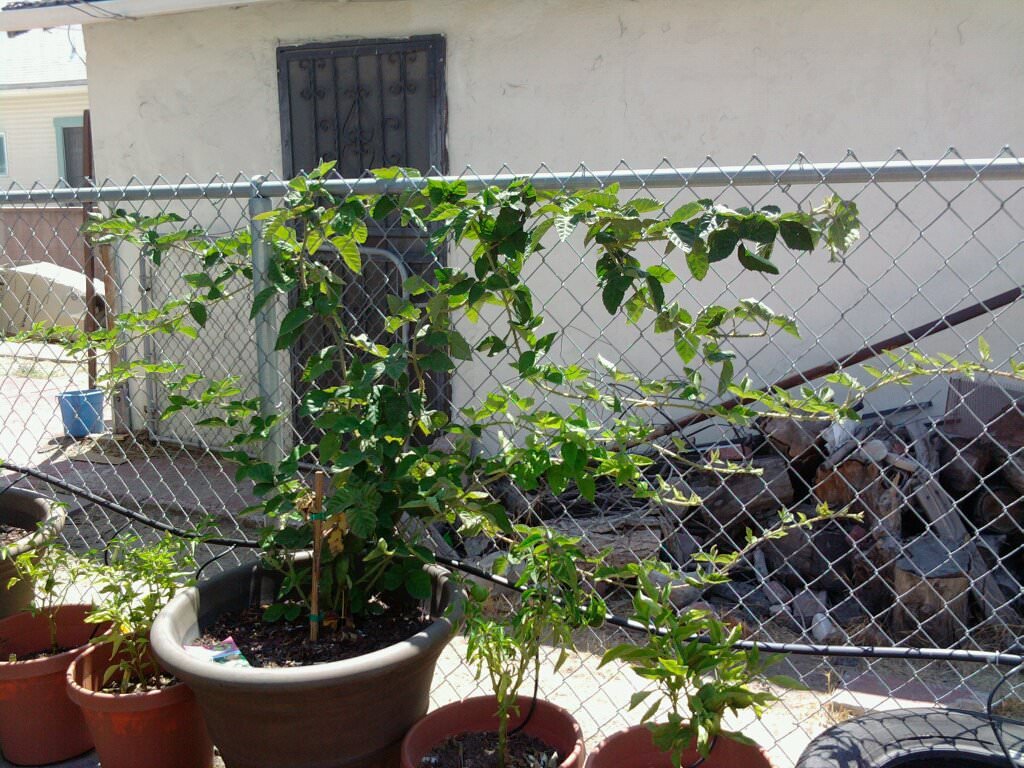
I was weaving the Blackberry Canes within the Chainlink Fence. This was about mid Summer when the heat was a little too much and the watering needed increased which is why some of the leaves look light colored and not so happy
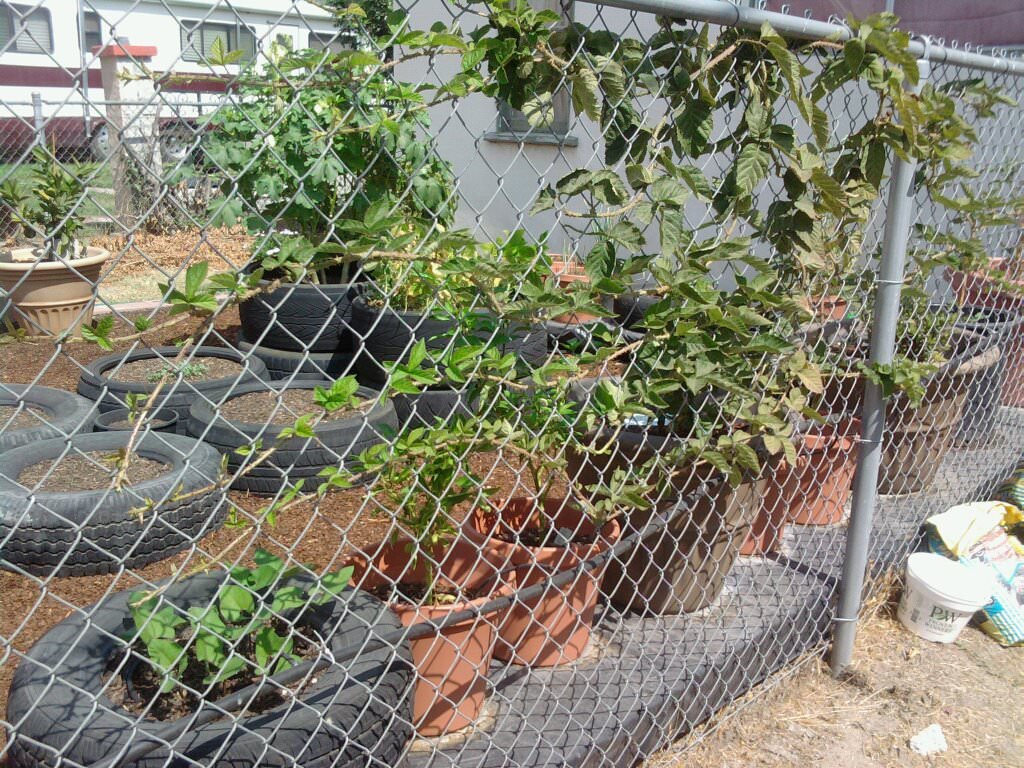
The Blueberry plant was pretty happy. The branches are short because I had pruned about 1/3 of the tips off after I harvesting the 10 blueberries it produced, as I'd read that would stimulate a bushier plant. Here is a good view of the Rubber mulch given to me by my neighbor
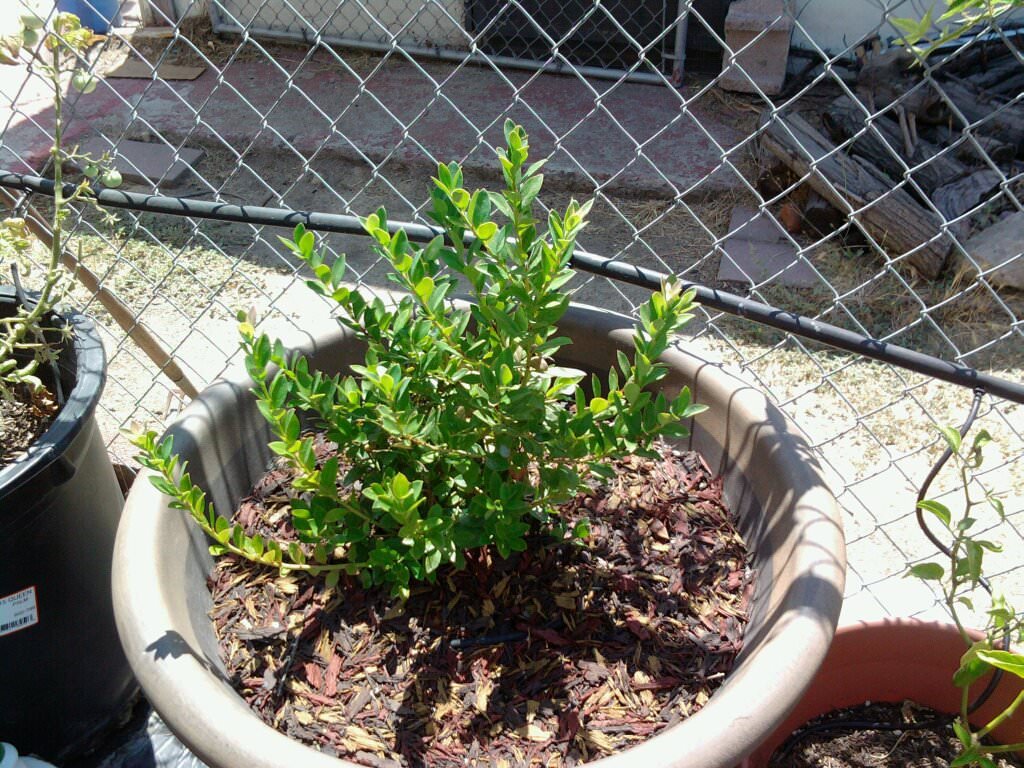
LESSON 4: VOLUNTEER HONEYDEW
This is no surprise to many gardeners and permaculturists. To me, it was. When seeds are in a compost bin, or scattered on the ground, it's not uncommon for plants to grow in unexpected places if the growing conditions are right and the seeds germinate. Such was the case here.
Once the leaves were big enough to identify the plant I supplemented water guessing on how much it needed based on the look of the leaves, and on when to harvest. Had I done research I probably would've had more melons polinating myself with Q-Tip due to the lack of pollinators in my yard. Because it grew late in the year, only the nerf football shaped melon was ripe enough to eat, even though there were 4 on the vine.
I was given a stackable compost bin which I'd setup beside my detached garage. A store bought Honeydew melon was enjoyed, then seeds and rind sent to the bin. As you can see, even though the ground was sandy, nutrient deficient soil, the compost gave the melon everything it seemed to need
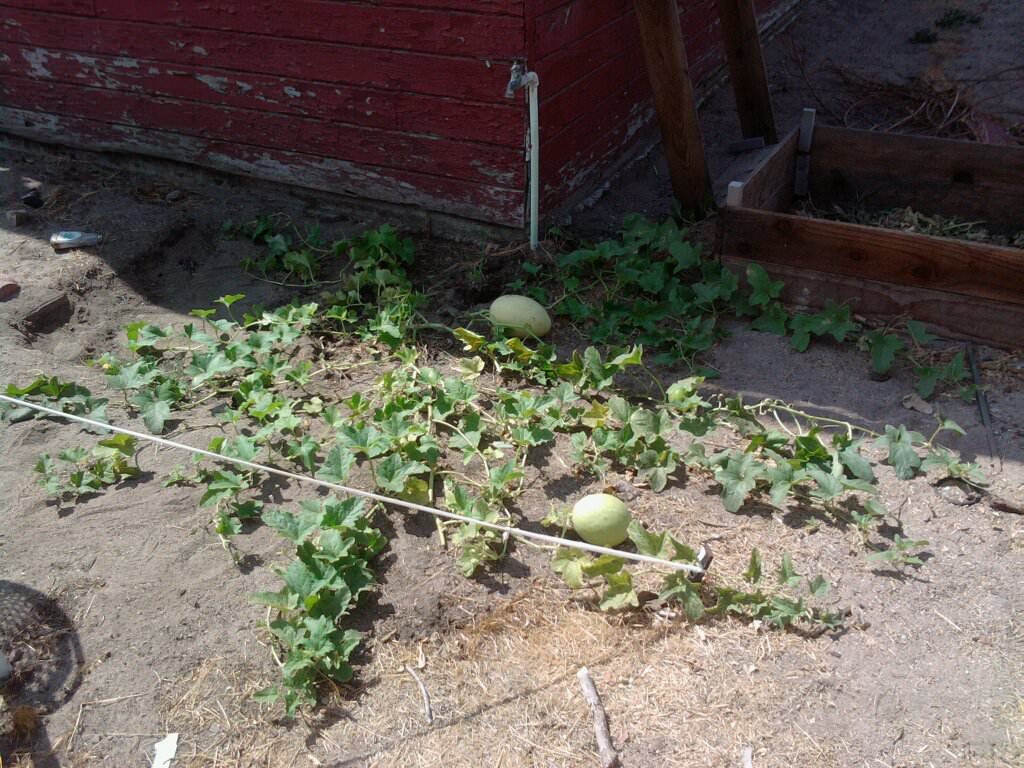
ONCE AGAIN, HERE IS THE DESIGN I TRANSLATED INTO A C.A.D. DRAWING
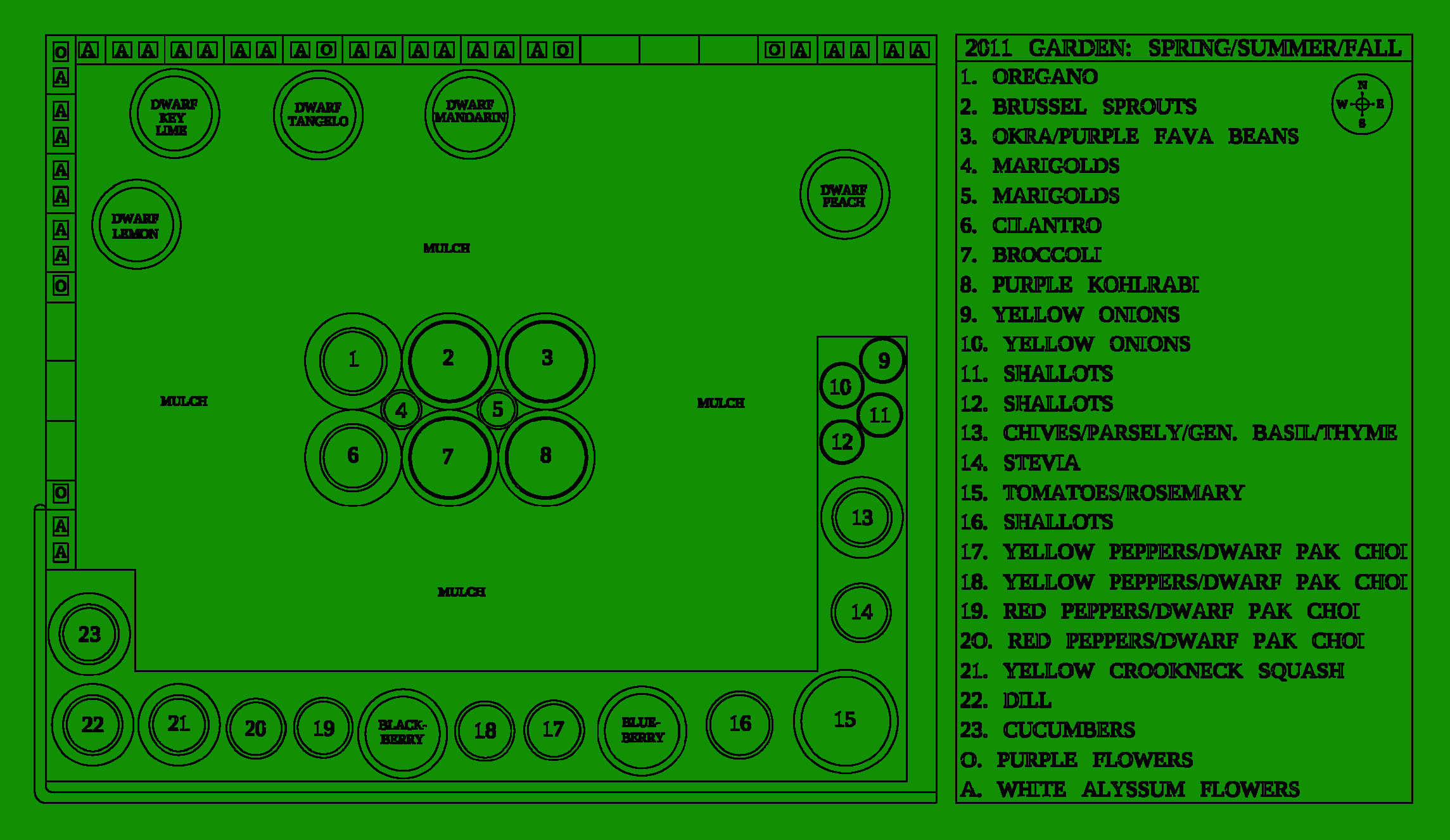
As a recap:
What I am PLANNING to do is chronicle memories and experiences from childhood through adulthood that will tie all of the elements in life which have molded this convoluted variety in interests into the ultimately cohesive path towards permaculture and homesteading. Concurrently will be a series of Gardening/Sustainability/Homesteading/Permaculture specific posts with tons of pictures documenting my progression from 2011 to 2017. Thank you for sticking around till the end. I hope you will enjoy these short stories.
For reference, here are the previous posts:
STORIES:
BAREFOOT IN THE BOONIES: EXPOSING MY ROOTS (introduction post)
BAREFOOT IN THE BOONIES: SETTING THE SCENE: Chapter 1
BAREFOOT IN THE BOONIES: FAMILY OWNED: Chapter 1 Section 2
2011 GARDEN:
TO BE CONTINUED...

That's all for now. Until the next post... If you found this post enjoyable, please consider upvoting, resteeming, following, and commenting! Thank you kindly for reading.

Phedizzle signature created by @bembelmaniac

Proud to be a member of @qurator, a curation group whose purpose is to help curate new Steemians get established on steemit, who are working hard to post quality content.

Looking for more quality posts about #homesteading, #permaculture Enthusiasts, and folks who believe in Sustainable Practices? Well then, check out the #homesteadersonline community, too. Hopefully you'll decide to join us.


So come say hello in the following Discord chat rooms:

Interested in participating in a social experiment called steembasicincome? check it...

